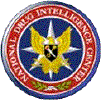Heroin is a highly addictive and rapidly acting
opiate (a drug that is derived from opium). Specifically, heroin is
produced from morphine, which is a principal component of opium. Opium
is a naturally occurring substance that is extracted from the seedpod of
the opium poppy.
The appearance of heroin can vary dramatically.
In the eastern United States, heroin generally is sold as a powder that
is white (or off-white) in color. (Generally, the purer the heroin the
whiter the color, because variations in color result from the presence
of impurities.) In the western United States, most of the heroin
available is a solid substance that is black in color. This type of
heroin, known as black tar, may be sticky (like tar) or hard to the
touch. Powdered heroin that is a dirty brown color also is sold in the
western United States.
Individuals of all ages use heroin--data
reported in the National Household Survey on Drug Abuse indicate that an
estimated 3,091,000 U.S. residents aged 12 and older have used heroin at
least once in their lifetime. The survey also revealed that many
teenagers and young adults have used heroin at least once--76,000
individuals aged 12 to 17 and 474,000 individuals aged 18 to 25.
Heroin use among high school students is a
particular problem. Nearly 2 percent of high school seniors in the
United States used the drug at least once in their lifetime, and nearly
half of those injected the drug, according to the University of
Michigan's Monitoring the Future Survey.
To Top
How is heroin abused?
Heroin is injected, snorted, or smoked. Many
new, younger users begin by snorting or smoking heroin because they wish
to avoid the social stigma attached to injection drug use. These users
often mistakenly believe that snorting or smoking heroin will not lead
to addiction. Users who snort or smoke heroin at times graduate to
injection because as their bodies become conditioned to the drug, the
effects it produces are less intense. They then turn to injection--a
more efficient means of administering the drug--to try to attain the
more intense effects they experienced when they began using the drug.
What are the risks?
Both new and experienced users
risk overdosing on heroin because it is impossible for them to know the
purity of the heroin they are using. (Heroin sold on the street often is
mixed with other substances such as sugar, starch, or quinine. An added
risk results when heroin is mixed with poisons such as strychnine.)
Heroin overdoses--which can result whether the drug is snorted, smoked,
or injected--can cause slow and shallow breathing, convulsions, coma,
and even death.
All heroin users--not just those
who inject the drug--risk becoming addicted. Individuals who abuse
heroin over time develop a tolerance for the drug, meaning that they
must use increasingly larger doses to achieve the same intensity or
effect they experienced when they first began using the drug. Heroin
ceases to produce feelings of pleasure in users who develop tolerance;
instead, these users must continue taking the drug simply to feel
normal. Addicted individuals who stop using the drug may experience
withdrawal symptoms, which include heroin craving, restlessness, muscle
and bone pain, and vomiting.
Heroin users who inject the drug
expose themselves to additional risks, including contracting human
immunodeficiency virus (HIV), hepatitis B and C, and other blood-borne
viruses. Chronic users who inject heroin also risk scarred or collapsed
veins, infection of the heart lining and valves, abscesses, pneumonia,
tuberculosis, and liver and kidney disease.
Street Terms for Heroin
|
Big H
Boy
Capital H
China white
Chiva
|
Dead on
arrival
Diesel
Dope
Eighth
Good H
|
H
Hell dust
Horse
Junk
Mexican horse |
Mud
Poppy
Smack
Thunder
Train
White junk |
|
Yes, heroin is illegal. Heroin is a Schedule 1 substance under the
Controlled Substances Act. Schedule I drugs have a high potential for
abuse and serve no legitimate medical purpose in the United
States.
To Top
Other products of interest:
Check out Fast Facts on:
- Crack cocaine
- Crystal methamphetamine
- GHB and analogs
- Inhalants
- Jimsonweed
- Ketamine
- Khat
|
- LSD
- Marijuana
- MDMA
- Methamphetamine
- PCP
- Powdered cocaine
- Prescription drugs
- Yaba
|
|
Also available from NDIC:
- Huffing--The Abuse of Inhalants
- Prescription Drug Abuse and Youth
- Drugs, Youth, and the Internet
For more information on illicit drugs check out our web site at:
www.usdoj.gov/ndic. Call 814-532-4541 to request NDIC products.
Our addresses:
National Drug Intelligence Center
319 Washington Street, 5th Floor
Johnstown , PA 15901-1622
Telephone: 814-532-4601
FAX: 814-532-4690
NDIC Washington Liaison Office
8201 Greensboro Drive, Suite 1001
McLean , VA 22102-3840
Telephone: 703-556-8970
FAX: 703-556-7807
NDIC publications are available on the following web sites:
ADNET http://ndicosa
LEO home.leo.gov/lesig/ndic
RISS ndic.riss.net
INTERNET www.usdoj.gov/ndic
To Top
|


